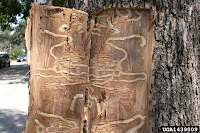 The Nature Conservancy-Pennsylvania Chapter, The Western Pennsylvania Conservancy and Audubon Pennsylvania recently released an assessment of energy exploration and development in Pennsylvania. The assessment was funded with support from Heinz Endowments, RK Mellon Foundation and William Penn Foundation. Highlights of the report are below. For the complete report go to http://www.nature.org/media/pa/tnc_energy_analysis.pdf.
The Nature Conservancy-Pennsylvania Chapter, The Western Pennsylvania Conservancy and Audubon Pennsylvania recently released an assessment of energy exploration and development in Pennsylvania. The assessment was funded with support from Heinz Endowments, RK Mellon Foundation and William Penn Foundation. Highlights of the report are below. For the complete report go to http://www.nature.org/media/pa/tnc_energy_analysis.pdf.* About 60,000 new Marcellus wells are projected by 2030 in Pennsylvania with a range of 6,000 to 15,000 well pads, depending on the number of wells per pad;
* Wells are likely to be developed in at least 30 counties, with the greatest number concentrated in 15 southwestern, north central, and northeastern counties;
* Nearly two thirds of well pads are projected to be in forest areas, with forest clearing projected to range between 34,000 and 83,000 acres depending on the number of number of well pads that are developed. An additional range of 80,000 to 200,000 acres of forest interior habitat impacts are projected due to new forest edges created by well pads and associated infrastructure (roads, water impoundments);* On a statewide basis, the projected forest clearing from well pad development would affect less than one percent of the state's forests, but forest clearing and fragmentation could be much more pronounced in areas with intensive Marcellus development;
* Approximately one third of Pennsylvania's largest forest patches (greater than 5,000 acres) are projected to have a range of between 1 and 17 well pads in the medium scenario;
* Impacts on forest interior breeding bird habitats vary with the range and population densities of the species. The widely-distributed scarlet tanager would see relatively modest impacts to its statewide population while black-throated blue warblers, with a Pennsylvania range that largely overlaps with Marcellus development area, could see more significant population impacts;
* Watersheds with healthy eastern brook trout populations substantially overlap with projected Marcellus development sites. The state's watersheds ranked as "intact" by the Eastern Brook Trout Joint Venture are concentrated in north central Pennsylvania, where most of these small watersheds are projected to have between two and three dozen well pads;
* Nearly a third of the species tracked by the Pennsylvania Natural Heritage Program are found in areas projected to have a high probability of Marcellus well development, with 132 considered to be globally rare or critically endangered or imperiled in Pennsylvania. Several of these species have all or most of their known populations in Pennsylvania in high probability Marcellus gas development areas.
 * Marcellus gas development is projected to be extensive across Pennsylvania's 4.5 million acres of public lands, including State Parks, State Forests, and State Game Lands. Just over 10 percent of these lands are legally protected from surface development.
* Marcellus gas development is projected to be extensive across Pennsylvania's 4.5 million acres of public lands, including State Parks, State Forests, and State Game Lands. Just over 10 percent of these lands are legally protected from surface development.* Integration of conservation features into the planning and development of Marcellus gas well fields can significantly reduce impacts. For example, relocating projected wells to open areas or toward the edge of large forest patches in high probability gas development pixels in the southern Laurel Highlands reduces forest clearing by 40 percent and forest interior impacts by over a third.

